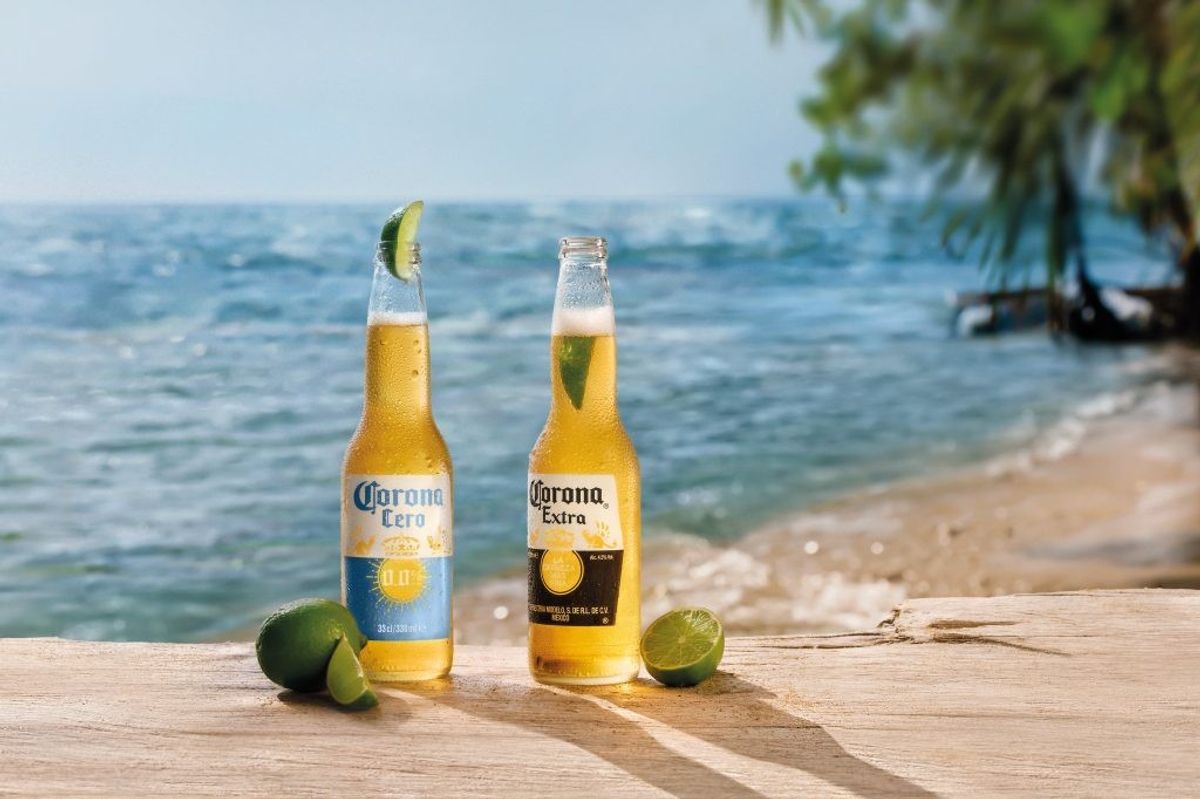AB InBev, the world’s largest brewer, has reported modest top-line growth and stronger profitability in its third quarter, buoyed by continued momentum in its megabrands and booming demand for no- and low-alcohol options.
Revenue rose 0.9 per cent in the three months to 30 September 2025, with a 4.8 per cent increase in revenue per hectolitre, although volumes fell 3.7 per cent as weaker demand in China and poor weather in Brazil weighed on sales.
Despite the volume decline, the Budweiser and Stella Artois owner said normalised EBITDA rose 3.3 per cent to $5.6 billion (£4.24bn), with margins expanding by 85 basis points to 37 per cent. Underlying profit was broadly stable at $1.97 billion, while underlying earnings per share grew 1 per cent to $0.99.
Chief executive Michel Doukeris said the group’s disciplined focus on revenue management and innovation had delivered “continued top- and bottom-line growth” despite a challenging consumer environment.
“Driven by the momentum of our megabrands and our innovation in balanced choices and Beyond Beer, our business delivered continued growth even as we navigated a dynamic consumer environment,” Doukeris said.
Megabrands and no-alcohol beers shine
AB InBev’s core megabrands continued to deliver steady gains, with combined revenues up 3 per cent in the quarter. Corona led the charge with a 6.3 per cent increase in sales outside Mexico, while Michelob Ultra became the No.1 beer brand by volume in the US.
The brewer’s no-alcohol beer portfolio surged 27 per cent, building on strong growth following Olympic Games activations last year. Flagship no-alcohol brand Corona Cero saw volumes climb in the low-forties percentage range, helping AB InBev tap into consumers’ increasing demand for moderation and balanced lifestyles.
Meanwhile, the company’s Beyond Beer portfolio – including brands such as Cutwater in the US – also recorded a 27 per cent revenue increase, with Cutwater achieving triple-digit growth.
Digital push gains traction
AB InBev’s digital B2B platform BEES Marketplace continued its strong expansion, with gross merchandise value (GMV) from sales of third-party products jumping 66 per cent year on year to $935 million. Overall BEES GMV increased 11 per cent to $13.3 billion, with the platform now live in 29 markets and accounting for about 70 per cent of the brewer’s global revenues.
Its direct-to-consumer (DTC) ecosystem – which includes delivery platforms Zé Delivery, TaDa Delivery and the PerfectDraft system – generated $325 million in revenue and 17.9 million e-commerce orders during the quarter.
Capital return and debt reduction
Reflecting confidence in its financial position, AB InBev’s board has approved a $6 billion share buyback to be executed over the next two years and a $2 billion bond redemption. It also declared an interim dividend of €0.15 per share for the 2025 fiscal year.
The brewer said these steps follow “solid year-to-date financial results” and progress on deleveraging, underlining its commitment to “disciplined capital allocation and long-term shareholder value creation.”
Regional performance
In Europe, AB InBev reported flattish volumes and low-single-digit revenue decline, with premiumisation driving stronger margins. Premium and super-premium brands now make up about 60 per cent of regional revenue.
Corona delivered double-digit volume growth, while Stella Artois gained visibility through marketing activations including its “Perfect Serve” campaign at Wimbledon. No-alcohol sales also remained strong, led by Corona Cero, which grew in the mid-twenties after triple-digit gains a year earlier.
Sustainability and outlook
AB InBev reported continued progress toward its sustainability goals, cutting Scopes 1 and 2 emissions by 48 per cent since 2017 and improving water efficiency by 4 per cent year on year.
Looking ahead, the company said it expects full-year EBITDA growth in line with its medium-term target of 4–8 per cent, with an effective tax rate between 26 per cent and 28 per cent.
Doukeris said the group’s diversified global footprint, innovation pipeline and premiumisation strategy provide “structural tailwinds for long-term volume growth.”
“Our solid year-to-date performance and the fundamental strengths of our business reinforce our confidence in our ability to deliver our FY25 outlook and long-term value creation,” he added.





